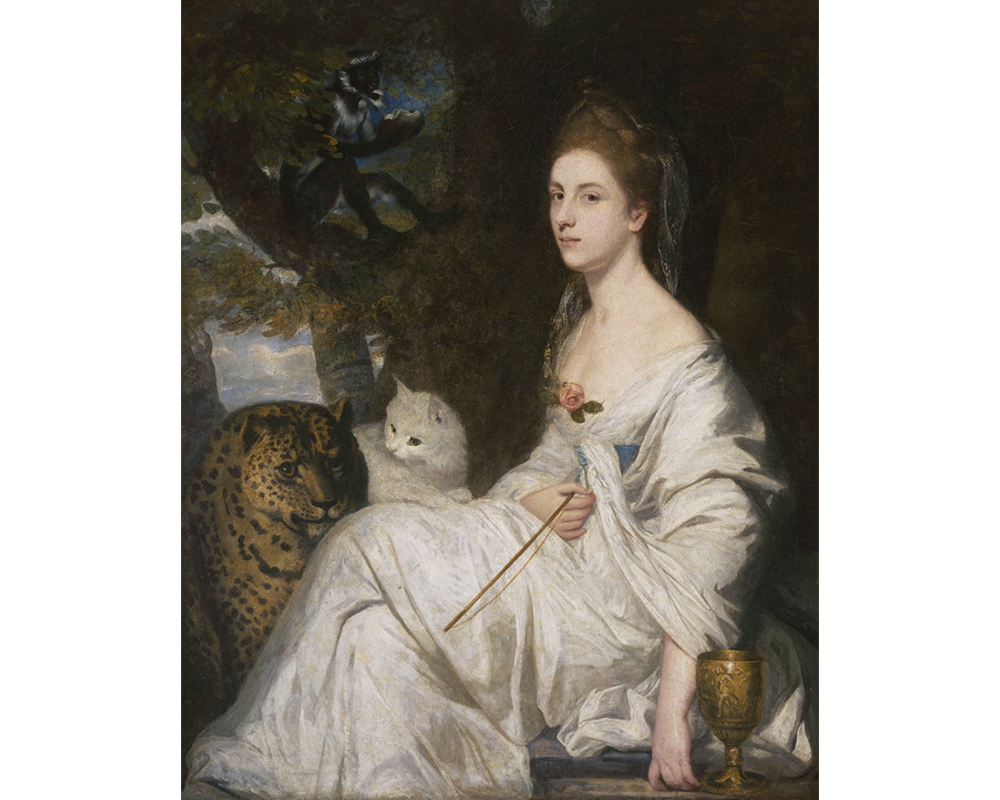
On Display: Wings and Women
Guest blogger Jessica Tran is a Smith College student, class of 2018. This post grew out of an assignment for the first-year seminar “On Display: Museums, Collections, and Exhibitions” taught by Professor Barbara Kellum in Fall 2014. As the culminating project of this class, four thought-provoking juxtapositions have been put on view in Museum until February 15, 2015. The painting Mrs. Nesbitt as Circe can be seen in the seventeenth and eighteenth century European section of the galleries on the second floor.
Mrs. Nesbitt as Circe is an oil on canvas painting by Sir Joshua Reynolds, while Woman and Child with a Parasol is a work on paper by an unknown artist. Not much is known about Woman and Child with a Parasol, as both the artist and date are unknown. It portrays the silhouette of a woman carrying a child and a parasol made out of butterfly wings. Because of the unknown nature of this piece of artwork, the method in which the butterfly wings were acquired is also unknown, so there is a question as to whether or not the method in which this artwork was made was ethical or not. It is possible that someone collected butterfly wings that remained after predators have eaten them, but it is also possible that the artist capture butterflies, killed them, and used their wings to create this piece. In terms of origin, it is suggested by the dark color of the woman’s skin and the fabric that is wrapped around the woman’s head, this art piece originates and depicts a woman from an African country. The piece shows the beauty of nature in the form of the elegance of the butterfly wings themselves, as well as the beauty of the circle of life.
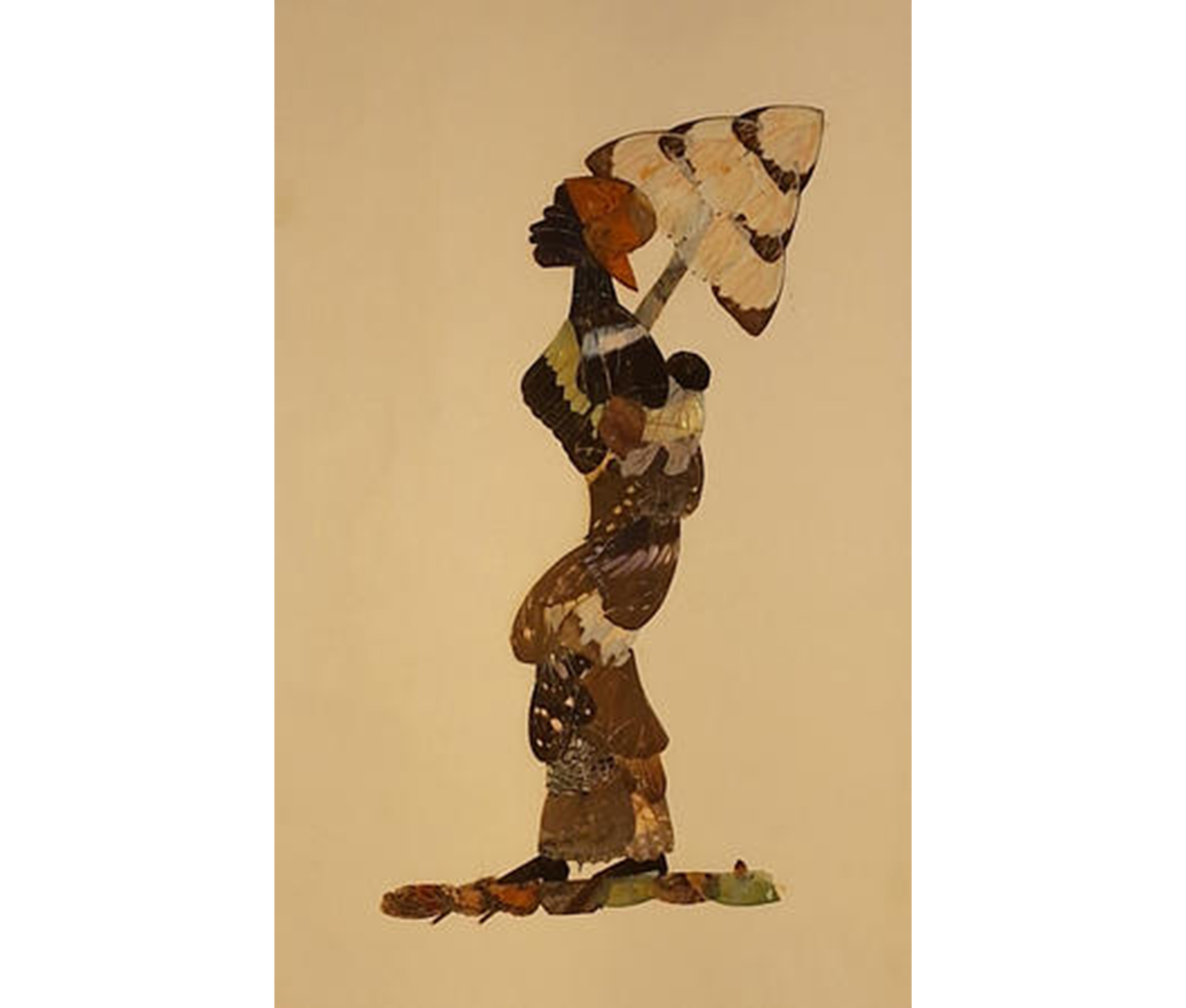
Unknown artist. Woman and Child with a Parasol, no date. Butterfly wings mounted on paper. Gift of Priscilla Paine Van der Poel, class of 1928. Photography by Petegorsky/Gipe.
Woman and Child with a Parasol is an example of assemblage, which is the creation of art by using found objects. The earliest known pieces of assemblage art made out of butterfly wings were from the series Assemblages d'Empreintes by Jean Dubuffet in 1955. Upon further research, these butterfly wing collages continue to be made in present day, primarily in the Central African Republic - thus it is likely that Woman and Child with a Parasol was made sometime during the past sixty years.
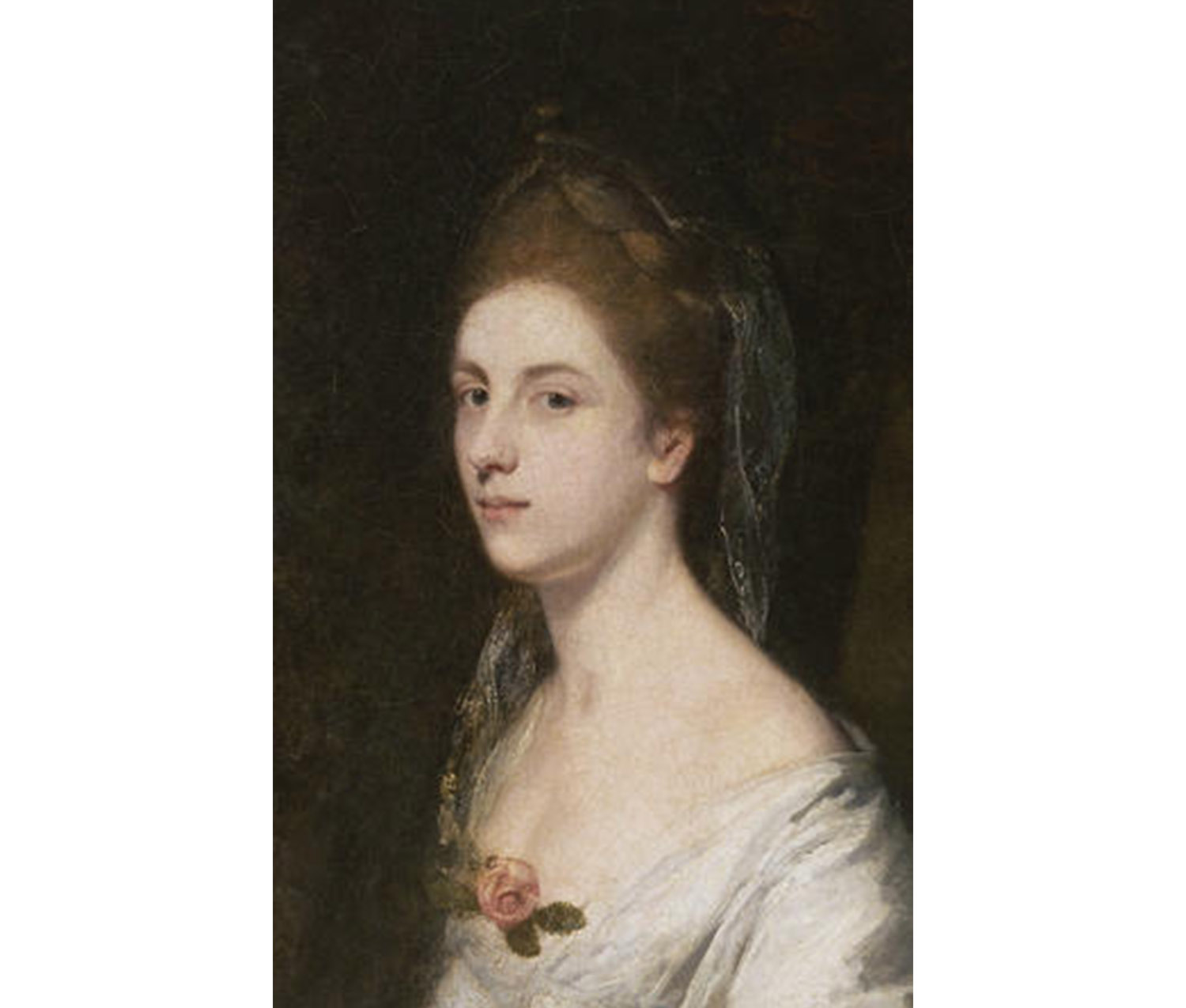
Detail of Mrs. Nesbitt as Circe
Mrs. Nesbitt as Circe is a portrait piece of Mrs. Nesbitt, an eighteenth-century socialite, representing her as Circe, a sorceress who drugged men with potions and turned them into animals with her wand. Not only were Circe and Mrs. Nesbitt both perceived as beautiful women that could seduce men, this painting shows a powerful image of this woman as someone who is able to control these wild animals. These animals can be perceived as the animalistic or sinful sides of humans – or in this particular case, men. For example, in the Odyssey, Circe lured Odysseus’s crew with her beauty and her food. The men that gorged themselves on the food that was laced with her potions were then turned into pigs because of their gluttony. Thus, she may have turned an arrogant man into the leopard, a selfish man into the cat, and a foolish man into the monkey.
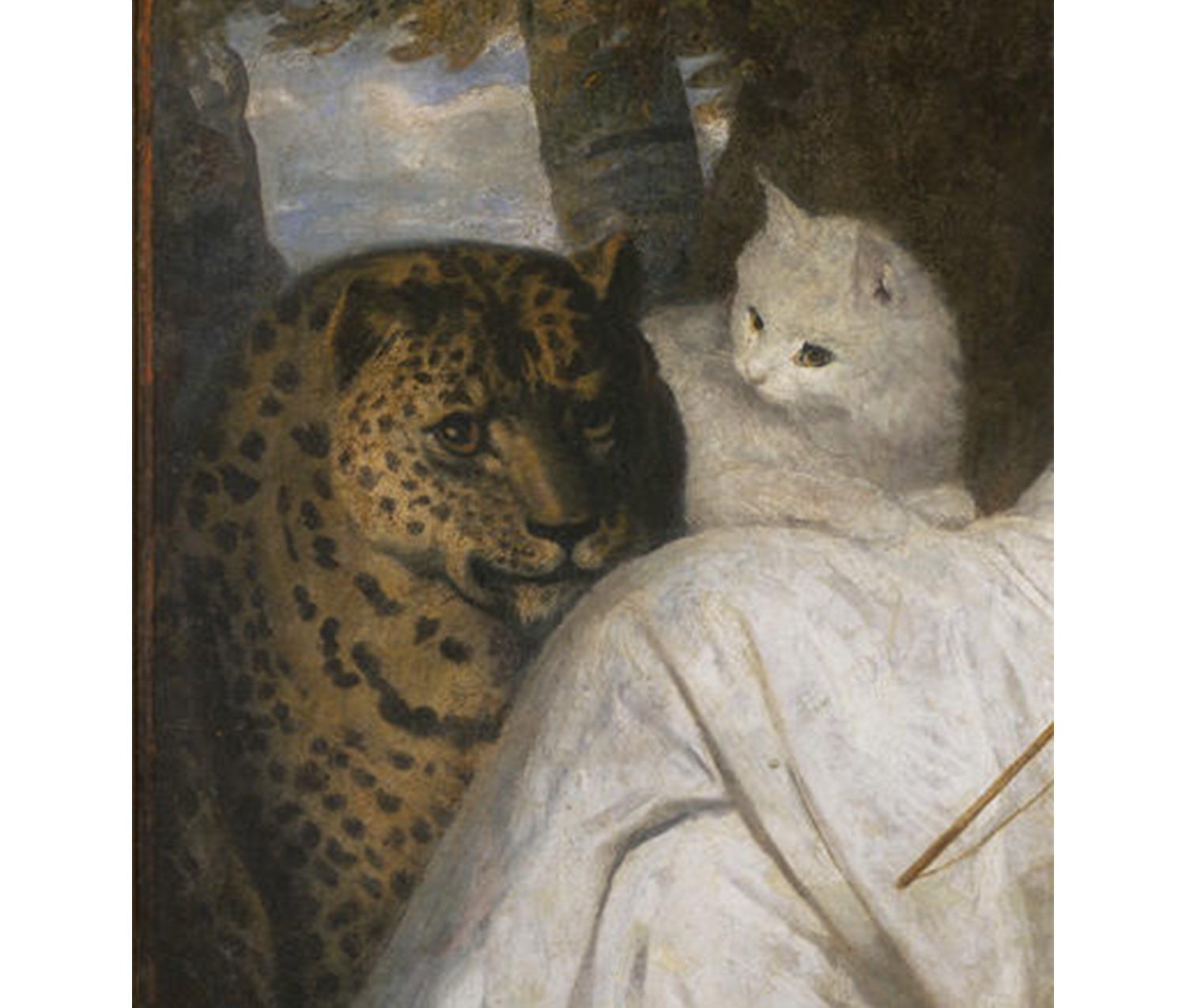
Detail of Mrs. Nesbitt as Circe
Additionally, the animals portrayed in the painting are normally described as “wild” rather than “docile” or “tame.” However, in the painting, the leopard, cat, and monkey are much smaller in size in comparison to Circe, portraying the power difference between them. In the darkness of the painting, the monkey is hard to see, serving as a protector and scouter. The cat seems to follow the leopard, who seems to be staring at the same thing that Circe is, as if they were staring at the same target. With her wand, potion, and followers at hand, Circe seems to be ready for battle.
By comparing these two pieces, we can see the different perspectives of women in two different societies, the European society and the African society. Firstly, each society considers different values to be important in a woman, and have different ideas for the ideal woman. For example, in the Woman and Child with a Parasol, the woman’s curves are well defined and the addition of the child shows that in their society, motherhood is emphasized and seen as a good value in a woman. By having a simple silhouette on white paper, the only focus of the piece is the silhouette and the butterfly wings. Additionally, the usage of butterfly wings may relate back to the circle of life, as we have the child representing the beginning of life, the woman representing the middle stage of life, and the butterfly wings representing the end of life.
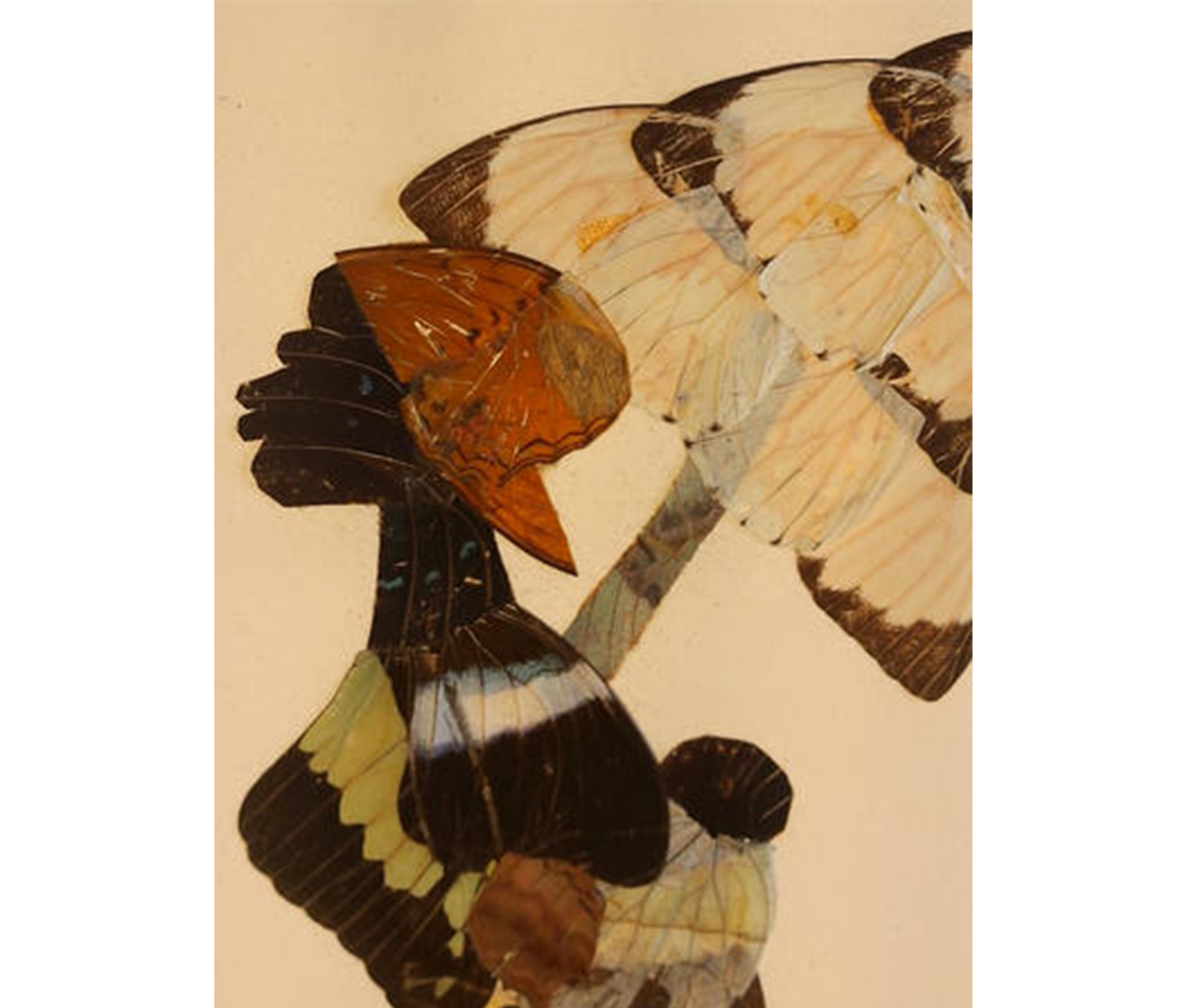
Detail of Woman and Child with a Parasol
On the other hand, Mrs. Nesbitt as Circe portrays Mrs. Nesbitt as a powerful woman, painted in fashionable light clothing, with soft lighting. This gives off an ethereal and mysterious feel to the painting, making Mrs. Nesbitt seem unattainable like mist. Mrs. Nesbitt was mistress to the third Earl of Bristol in her time, and was “involved in various political intrigues, including her alleged service as a British secret agent during the French Revolution.” This beauty, elegance, and mysteriousness is valued in European culture.
Both pieces of art intrigue the viewers in different ways. Some may view the Woman and Child with a Parasol as disturbing or unsettling, due to the nature of the materials used, but by using butterfly wings, one can see both the beauty and the cruelty of nature. Likewise, Mrs. Nesbitt as Circe shows how women can be both beautiful and cruel, just like nature. In nature, the animals with the brightest colors are often the most poisonous, and this is reflected in both pieces of art, as the more beautiful they are, the crueler they can be.